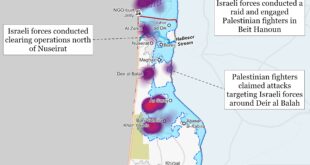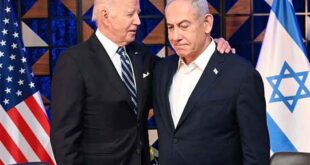U.S. President Joe Biden and his Russian counterpart Vladimir Putin are set to hold a tense round of talks amid rising tensions over Russia’s troop buildup on the Ukrainian border, NATO’s future in the region, and Russia’s security demands.
The December 7 meeting, to be held via video conference, is the second face-to-face meeting between the two leaders since Biden became president in January. And it may turn out to be most consequential to date, as the Kremlin seeks guarantees that Ukraine will never become a member of the North Atlantic alliance.
“Of course, [the agenda] will be bilateral relations, which remain in a rather lamentable state,” Kremlin spokesman Dmitry Peskov told reporters on December 6, adding that questions around Ukraine, NATO expansion, and security guarantees will “loom large.”
Prior to his video conference with Putin, Biden spoke in a call with the leaders of U.S. allies Britain, France, Italy, and Germany, according to a statement by the White House.
The statement said the leaders reiterated their support for Ukrainian sovereignty and territorial integrity and urged Russia to de-escalate tensions in the region.
U.S. officials say more than 150,000 Russian troops have been deployed to regions north and east of Ukraine, as well as on the Crimean Peninsula, which Russia annexed in 2014. It’s one of the largest movements of Russian forces toward Ukraine in years, outside of regularly scheduled and announced training exercises.
That, plus the absence of more routine notification procedures shared even with adversaries, has set off alarm bells, not only in Ukraine, but in many NATO countries, particularly those in Eastern Europe.
“We do not know, or have a clear indication, that President Putin has actually given an affirmative action order here. It is more about planning and intentions that the kinds of movements we have seen. In this regard, the planning from our perspective is clear,” a senior U.S. administration told reporters December 6.
“We have seen the movement of additional capabilities, and forces, toward the vicinity of Ukraine, in multiple areas, and these movements are consistent with the planning under way for a military escalation in Ukraine,” said the official, who spoke on condition of anonymity.
Ukraine has already been fighting a war in eastern regions of Donetsk and Luhansk, known as the Donbas, since early 2014, which broke out after months of street protests exploded in violence and forced the pro-Russian president to flee.
Russia has repeatedly denied supplying or financing the separatist fighters in eastern Ukraine, despite overwhelming evidence to the contrary. More than 13,200 people have died since the outbreak of violence; and more than 1 million have fled.
After Biden and Putin met in Geneva in June, many experts hoped that the Ukraine conflict would somehow inch toward resolution, as Washington and Moscow looked for ways to arrest the downward spiral in relations.
That hasn’t happened, and the deployment of unusually sizable number of Russian battalion-sized infantry, armored, and artillery units in the vicinity of Ukraine, has prompted U.S. intelligence to issue increasing warnings.
The two leaders also spoke in July, when Biden called on Putin to do more to crack down on ransomware attacks against the United States. Many of the leading ransomware groups either operate in, or originate from, Russia.
Biden has also dispatched other senior administration officials, including CIA Director Bill Burns and veteran Russian expert Victoria Nuland, now undersecretary of state for political affairs, to Moscow to try and mend fences.
Over the weekend, unnamed U.S. officials told The Washington Post and other U.S. news media that Russia was posed to use up to 175,000 troops in a multifront offensive against Ukraine early next year.
The plans involved so-called “battalion tactical groups” along with artillery, infantry, and tanks and other armored equipment.
Though Ukraine is not a member of NATO, and is unlikely to be for some years, Putin and other Russian officials have signaled that that membership is a “red line” for the Kremlin, where many see NATO’s expansion into former Soviet bloc nations in the late 1990s and early 2000s as a betrayal.
Last week, NATO’s secretary-general, Jens Stoltenberg, said that Russia has no say in expansion plans by other countries or the alliance.
Kremlin officials have signaled that, for some, Ukraine’s independence might be an artificial notion, and that Russia and Ukraine should be reunited in some form, as during the Soviet era.
Putin has also signaled he wants legally binding guarantees that NATO will not expand further east. as well as a pledge that some, unspecified weapons systems will not be deployed in countries close to Russia, including Ukraine.
 Eurasia Press & News
Eurasia Press & News



